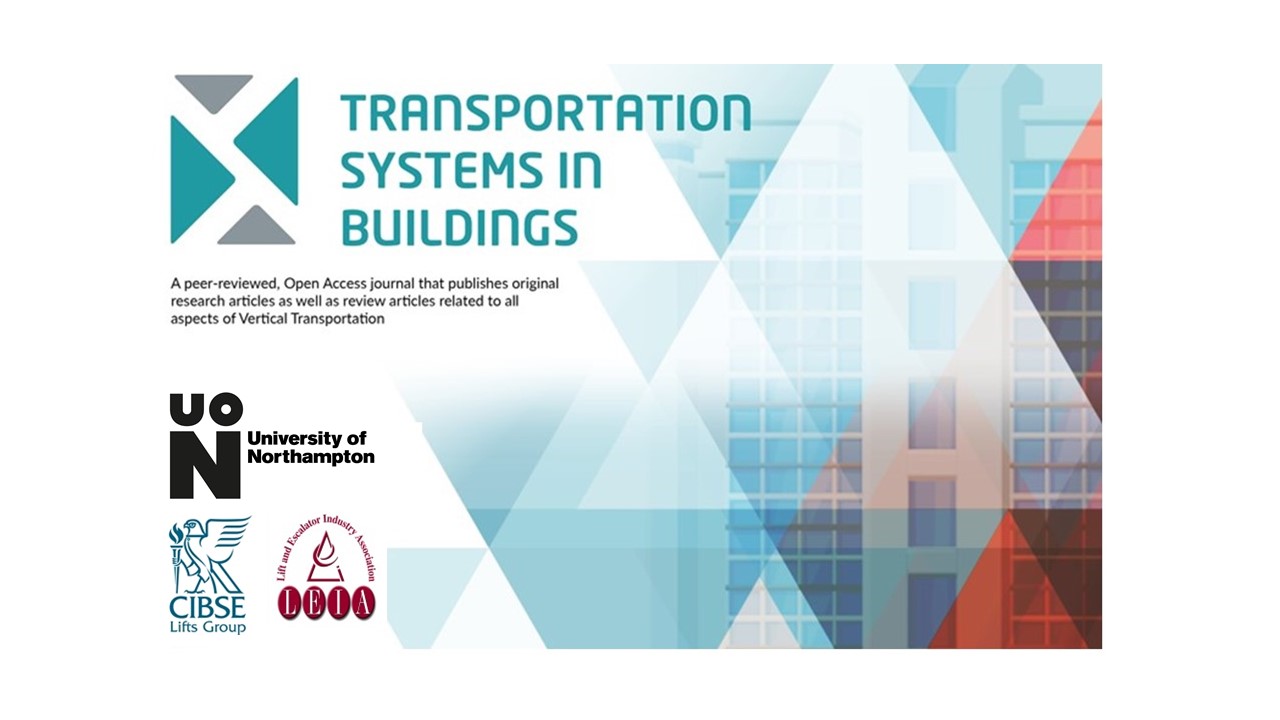Towards A Global Traffic Control (Dispatcher) Algorithm - Requirements Analysis
DOI:
https://doi.org/10.14234/tsib.v2i1.147Abstract
This paper presents an analysis of the requirements of a Global Dispatcher Interface for the control of a group of lifts. The information passed to and from the interface is defined as well as the common processing which will be executed on that information in order to generate the response. Using recognised software development methods, requirements are elicited from a consideration of the significant use cases and the architectural configurations which must be supported by the interface. The analysis is presented as interaction diagrams which show the collaborations and responsibilities of the key objects of the software.References
Peters, P. (2016). Global Dispatcher Interface - Proceedings 6th Symposium on Lift & Escalator Technologies (pp. 18-1 18-9). Northampton: CIBSE.
G. C. Barney, G.C. and Al-Sharif, L. (2016) Elevator Traffic Handbook, Second edition, Chap.12, Routledge, Abingdon UK, 2016, ISBN 978-1-138-85232-7.
thyssenkrupp Elevators Corporate Website . AGILE., From: thyssenkrupp-elevator.com: http://www.thyssenkrupp-elevator.com/agile/
[Accessed February 16, 2018]
KONE Corporate Website, "KONE DESTINATION SOLUTIONS", 19/02/2016, https://www.kone.co.uk/new-buildings/kone-people-flow-intelligence/destination-solutions/ [Accessed February14, 2018].
Sparx Systems Corporate Website. Sparx Enterprise Architect. From: http://www.sparxsystems.com. [Accessed Jan, 2018].
Bitner, K and Spence, I. (2003). Use Case Modelling, Pearson Education Inc., Boston USA, ISBN0-201-70913-9.
Eriksson, H.-E., & Penker, M. (1998). UML Toolkit - Domain Analysis, (pp. 247 & 324 - 325). John Wiley & Sons, Inc.
Beebe, J. (2018). Global Dispatcher Service - UML Model. Retrieved from: dispatcher.std4lift.info/html/index.htm [Accessed February 17, 2018]
CIBSE. (2015). CIBSE Guide D. 2015 Transportation Systems in Buildings. The Chartered Institution of Building Services Engineers.
Beebe, J. "Standard Elevator Information Schema", http://www.std4lift.info/ [Accessed February 17, 2016].
Beebe, J. (2018). Global Dispatcher - Use Cases., From: Jonathan Beebe - Global Dispatcher:
http://dispatcher.std4lift.info/GlobalDispatcher-UseCases.pdf [Accessed February 17, 2018]
thyssenkrupp Elevators Corporate Website. MULTI., From: thyssenkrupp-elevator.com: http://www.thyssenkrupp-elevator.com/en/products-and-service/multi/# [Accessed January 23, 2018]
Gerstenmeyer, S., & Peters, R. (2016). Multicar Dispatching. 6th Symposium on Lift & Escalator Technologies - Proceedings Vol 6 (pp. 8-1 - 8-12). Northampton: The CIBSE Lift Group.
Emre Oner Tartan, Cebrail Ciftlikli.( 2016) A Genetic Algorithm Based Elevator Dispatching Method For Waiting Time Optimization; IFAC-PapersOnLine; Volume 49, Issue 3(pp. 424-429)
https://doi.org/10.1016/j.ifacol.2016.07.071
Beebe, J. (2018). Global Dispatcher - Requirements Catalogue., From: Jonathan Beebe - Global Dispatcher:
http://dispatcher.std4lift.info/GlobalDispatcher-Requirements.pdf [Accessed February 17, 2018]
Richards, M. (2015). Software Architecture Patterns. Chap. 2. Event-Driven Architecture, O'Reilly Media, Inc.
Wikipedia, CRUD definition, https://en.wikipedia.org/wiki/Create,_read,_update_and_delete, [Accessed May 26, 2018]
Waher, Peter. (2018), Mastering Internet of Things, Chap 10 The Controller, Packt Publishing Ltd. (www.packtpub.com),ISBN 978-1-78839-748-3.
Downloads
Published
How to Cite
Issue
Section
License
The author(s) must warrant that an article is original and the sole work of the author(s); the author(s) must also obtain relevant permissions from any third-party copyright holders. Where an article or report has more than one author, the submitting author is responsible for ensuring that all other authors agree to the terms of submission.
Copyright and associated moral rights in works published in Transportation Systems in Buildings are retained by the authors. Authors grant to The University of Northampton and Transportation Systems in Buildings non-exclusive rights to reproduce works electronically (in full or in part) and to publish works in any such media current or later developed. By virtue of their appearance in this open access journal, works may be used freely, with proper attribution, in educational and other non-commercial settings.

